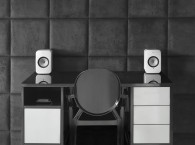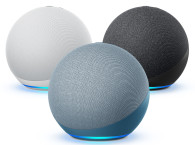
“But it’s no longer all about the smart speaker,” says Jack Wetherill, a principal analyst at Futuresource Consulting. “For TVs, VAs are being rolled out by leading brands such as LG, Sony, Panasonic and Samsung. Most involve a microphone in the remote control, similar to those used in media streamers, assuring a continued lifespan for the trusty set until manufacturers include microphones in the sets themselves. This can be costly and will require solutions for technical issues around noise and echo cancellation, due to microphones being located adjacent to TV speakers.
“In soundbars, we already have leaders such as Bose, Denon, Polk, Samsung, Sonos, Sony and Yamaha rolling out products on either a ‘built-in’ or ‘works with’ basis. Our quarterly tracker shows that smart soundbars accounted for 5% of all soundbar shipments in Q4 2018, and we’re going to see a substantial uplift in activity this year,” adds Wetherill.
The new virtual assistants market tracking service from Futuresource looks beyond the world of audio to explore the adoption of VAs globally by region, voice integration, platform, device type and by brand. Whether companies are producing VAs and devices or harnessing VAs to reach their customers, the tracker provides detailed historical and forecast analysis, alongside strategic insights.
“VAs will allow companies to enhance their relationship with the consumer and establish an advantageous brand position,” says Guy Hammett, Market Analyst, Futuresource Consulting. “With many consumer brands already leveraging VAs, from mobile and wearables, to smart home, to automotive, to toys and ecommerce, we’re beginning to see a VA landgrab emerge. And the stakes are high. The company that controls the user interface can influence user behavior, choice of services and products. Combine that with the associated access to user data and it begins to get very interesting, with opportunities that include better understanding and personalization of services, packaging of content, internal analytics, advertising and marketing, or even anonymisation and packaging for re-sale to B2B partners.”

The smartphone category currently accounts for the lion’s share of global consumer VA market shipments, at 71% in 2018. Home CE, PCs and automotive accounted for 15%, 13% and 1% respectively. By 2022, smartphone, home CE and automotive will all have increased their market share at the expense of PCs.
“Google Assistant Connect, announced at CES 2019, is another interesting development for the VA space,” says Wetherill. “Rather than serving out an additional bridging device, such as Echo Input, this initiative allows Google to roll out a chip solution which audio brands can include in their products. Devices will be able to respond to and supply Google Assistant commands by relying on another Google Assistant device in the home, sparing the audio brands the need to embed microphones and heavyweight processing in their devices. It’s a low-involvement play that should result in a whole array of additional devices responding to voice.
“In this new VA-enabled world we’re going to have even easier access to effective browsing and discovery of content, providing an essential shortcut through the user interface and improving the overall user experience. We’ll use virtual assistants to search online, to compile our shopping lists and make those purchases, manage our schedules, control our home automation systems and our smart devices, command our autonomous vehicles and so much more. It’s great news for hardware makers, content providers and consumers alike.”
Futuresource has two market tracking services that explore the VA ecosystem, namely ‘Home Audio Quarterly Tracker’ and ‘Virtual Assistants Market Tracking,’ and recently released a data-driven infographic, ‘Voice Assistants in Home Electronics’, which ca be downloade here: https://www.futuresource-consulting.com/free-content-analysis/consumer-electronics-downloads/
For further forecasts and insight into the CE landscape please visit:
www.futuresource-consulting.com






